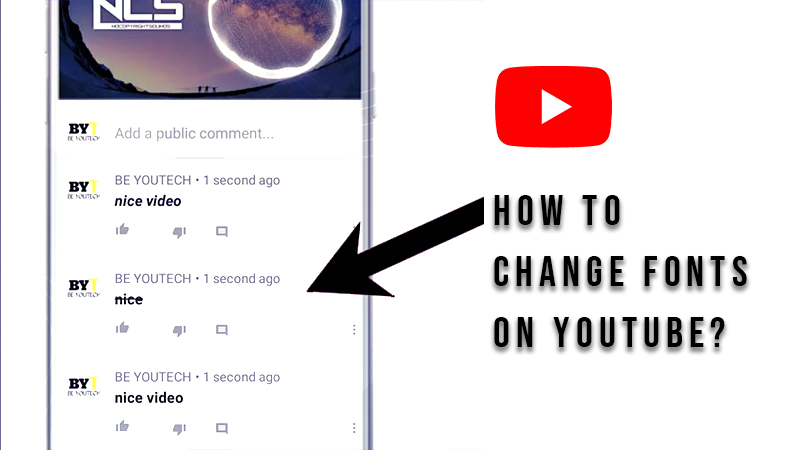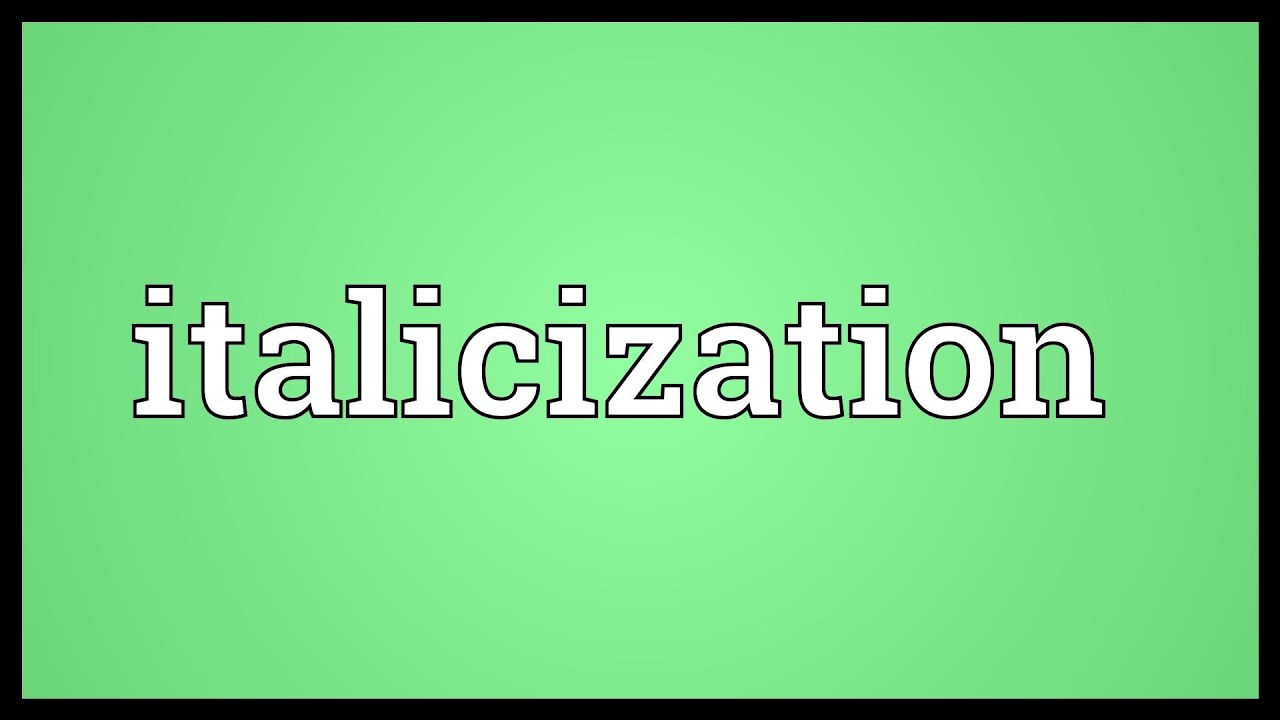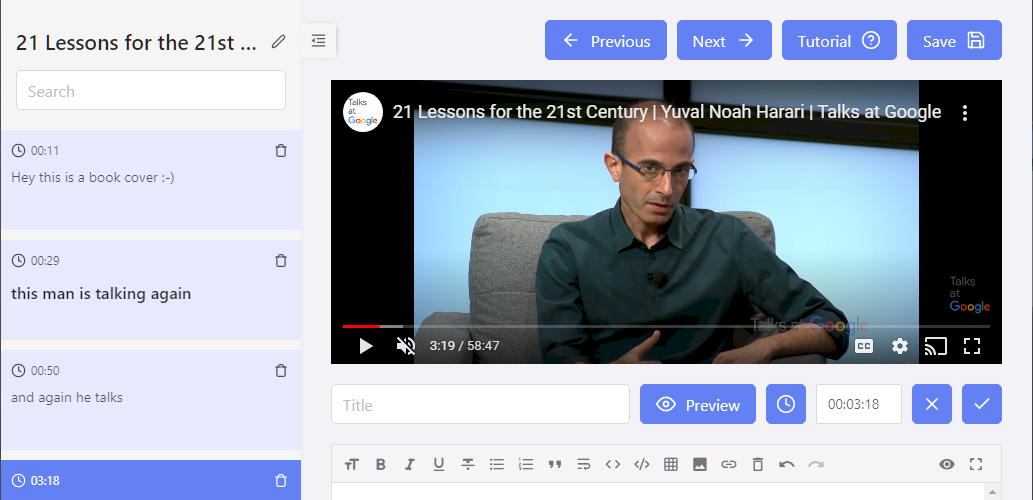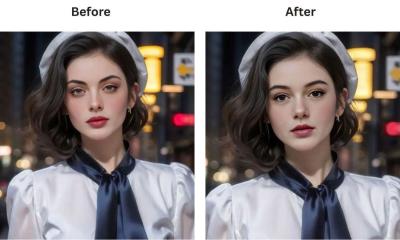When it comes to digital communication, subtle nuances can greatly impact how a message is perceived. One such nuance is italicization—a stylistic choice that's often used to emphasize certain words and phrases. In the realm of platforms like YouTube, where engagement is key, understanding the role of italicization can enhance both content creation and viewer interaction. In this post, we're diving into why italicization matters and how it shifts meaning depending on context.
The Importance of Format in Written Communication

Have you ever read a message and felt that certain words carried more weight than others? That’s where format comes into play! Written communication isn’t just about the words; it's also about how those words are presented. This is where *italicization finds its place. Here are a few key reasons why format is crucial:
- Emphasis: Italics can make specific words pop, signaling to the reader that these terms are important. For instance, saying “I love pizza” gives a stronger emotional punch than just saying “I love pizza.”
- Clarity: Italicizing phrases or words can help clarify meaning, especially when dealing with complex subjects. For instance, stating “In the film, Inception, the plot twists are mind-bending” makes it clear that “Inception” is a title.
- Style: Italics often lend a certain flair or artistic element to the text. They can make your writing feel more polished and engaging.
- Distinction: It helps distinguish between different kinds of information. For example, using italics for book titles or foreign words can set them apart from regular text.
In platforms like YouTube, where visuals are paired with text, the format becomes even more pivotal. The right emphasis can draw viewers in, making them more likely to engage with the content. So, the next time you're crafting a title or description, think about how italicization can change the game!
When and Why to Italicize YouTube

Italicizing "YouTube" might seem like a small detail, but it carries significant weight in writing, especially in contexts that require clarity and formality. Understanding when and why to italicize can help your writing look polished and professional.
Generally, "YouTube" should be italicized in specific situations, such as:
- Titles of Works: When mentioning YouTube in the context of a larger piece, like an article or a research paper, it’s appropriate to italicize it. For example, “I found this fascinating video on YouTube that discussed climate change.”
- Citing Sources: If you’re referring to a video or a series of videos, italicization helps readers immediately identify the platform from which the content is derived. For instance, “In her tutorial on YouTube, she explained the fundamentals of graphic design.”
- Formal Writing: In academic or professional writing, adhering to style guides such as APA, MLA, or Chicago may specify that platform names like YouTube should be italicized to distinguish them as titles of digital media.
Not italicizing YouTube could lead to confusion or a lack of professionalism in your writing. Not everyone follows the same conventions, but consistently italicizing can signal that you take your writing seriously.
Comparison with Other Platforms

When discussing social media and video platforms, it’s important to recognize how naming conventions differ from one platform to another. Here’s a quick comparison to illustrate how "YouTube" stacks up against its competitors.
| Platform | Italicization Rule |
|---|---|
| YouTube | Italicized in formal writing |
| Not italicized | |
| Not italicized | |
| TikTok | Not italicized |
| Not italicized |
As you can see, most social media platforms like Instagram, Facebook, Twitter, and TikTok generally don't follow the same italicization rule as YouTube. This distinction can subtly influence how content is perceived in various contexts.
Understanding these differences not only aids in proper referencing but also enriches the reader’s comprehension of your writing. So next time you’re mentioning YouTube, keep these points in mind!
Guidelines from Style Manuals
When it comes to italicizing content, the rules can vary significantly depending on which style manual you’re adhering to. Here’s a breakdown of some of the most influential ones:
- APA (American Psychological Association): According to APA guidelines, you should italicize titles of standalone works such as books, movies, and yes, even YouTube videos. This means that if you're discussing a specific video, you’d write it like this: The Amazing World of YouTube.
- MLA (Modern Language Association): In MLA style, titles of longer works, including films and television series, are italicized. However, for shorter works like episodes or individual YouTube videos, you typically would use quotation marks instead. So, The Amazing World of YouTube would be italicized, but “The Evolution of Video Content” would go in quotes.
- Chicago Manual of Style: Similar to MLA, the Chicago Manual recommends italicizing the titles of standalone works and using quotation marks for shorter works. So, if you're citing YouTube as a broader topic, you might italicize it, but individual video titles should be quoted.
These are just a few examples, and it’s important to consult the specific style manual that’s relevant to your work. Following these guidelines ensures clarity and consistency, making it easier for your readers to understand the context in which you’re discussing YouTube.
Common Misconceptions about Italicization
Italicization can be quite confusing, especially for those who are just starting to dive into the world of writing and academic style. Here are some common misconceptions that often pop up regarding italicization, specifically when it comes to YouTube and other digital media:
- Myth 1: You Should Always Italicize YouTube: A common myth is that YouTube as a whole should always be italicized. In reality, you only need to italicize the platform name when it's used in a title or a specific context that calls for it. For instance, “I watched YouTube* for hours” is correct, but “I enjoy YouTube videos” doesn’t require italicization.
- Myth 2: All Video Titles Must Be Italicized: While it's widely accepted to italicize the titles of standalone videos or series, this doesn't apply uniformly across all style guides. Always check your specific style manual for the correct usage of titles.
- Myth 3: Italicization is Just for Emphasis: While italicizing can indeed provide emphasis, its primary role in academic writing is to distinguish titles of works from the rest of the text. So, it's not just a stylistic choice; it's a matter of clarity and format.
By debunking these myths, you can clarify your writing and correctly represent the titles of YouTube videos, ensuring your work is both professional and accurate.
Understanding the Italicization of YouTube in Different Contexts
Italicization is a stylistic choice that serves various purposes in written language, and its application to "YouTube" can vary depending on context. Understanding these nuances is vital for effective communication, especially in digital media where YouTube plays a significant role. Below are several contexts in which "YouTube" may be italicized:
- Titles of Videos: When referencing specific video titles, italics often help differentiate between the platform and the content. Example: This is How YouTube Changed My Life.
- Emphasis on Platform: Italics can be used to emphasize the platform itself in a discussion about online media. Example: "On YouTube, creators can independently share their content."
- Publications or Reviews: When discussing articles, blogs, or studies that focus on YouTube, italics can signify the subject matter being analyzed.
However, it's important to follow the style guide appropriate to your writing context. For instance, the APA style generally considers YouTube as a proper noun and does not require additional italicization when not referring to a specific video title.
| Context | Italicization |
|---|---|
| Video Title | Italicized |
| Discussing the Platform | Italicized (optional for emphasis) |
| Academic/Research References | Generally italicized |
In conclusion, understanding the italicization of YouTube in different contexts can enhance clarity and precision in your writing, allowing for proper representation of ideas and effective communication with audiences.
 admin
admin








